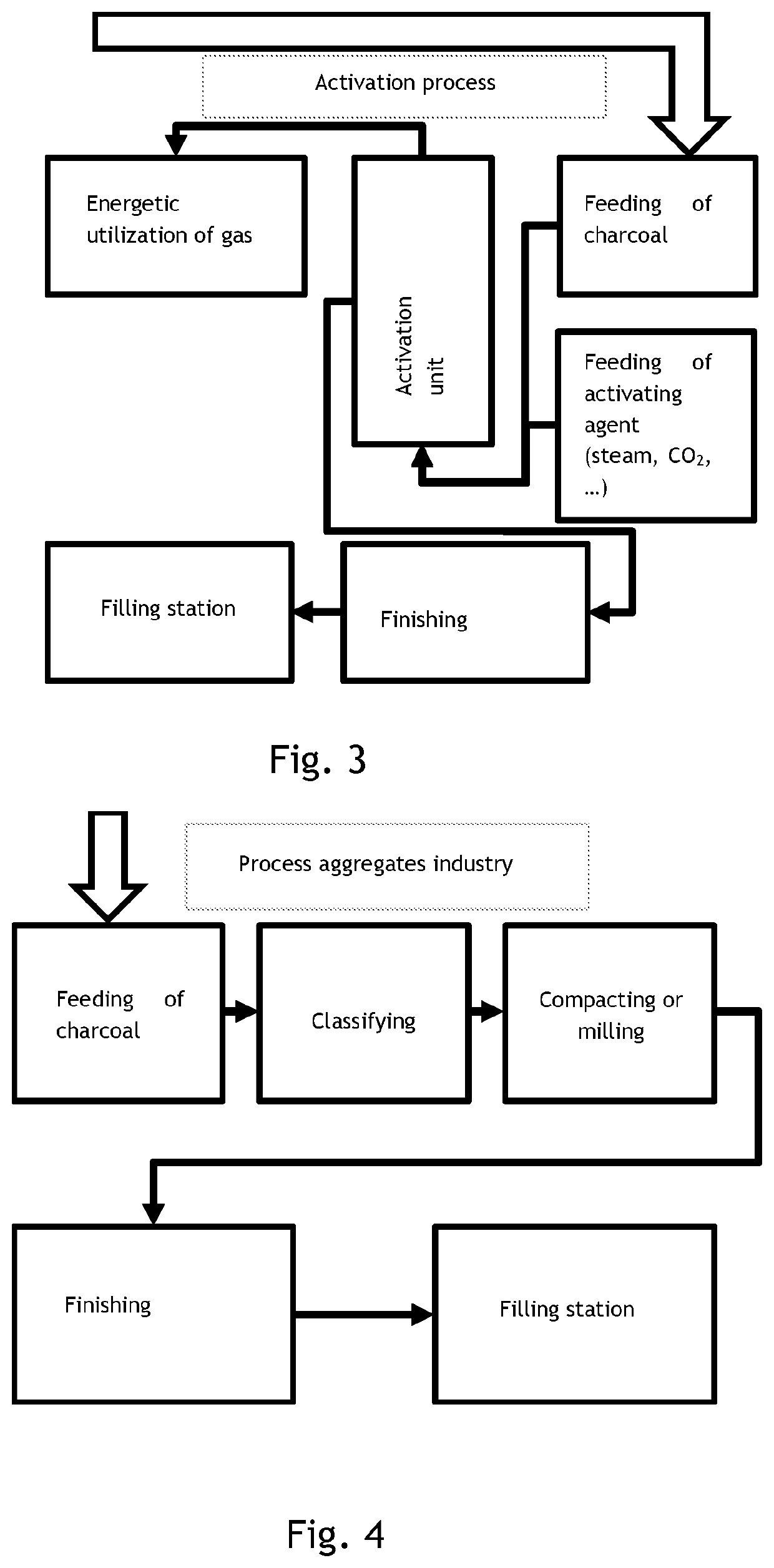Method for producing charcoal
a charcoal and charcoal technology, applied in the field of charcoal production, can solve the problems of high carbon content that cannot be achieved, unsuitable for numerous applications, and large size distribution, and achieves significant disadvantages in terms of particle size, carbon content, and absence of pollutants
- Summary
- Abstract
- Description
- Claims
- Application Information
AI Technical Summary
Benefits of technology
Problems solved by technology
Method used
Image
Examples
Embodiment Construction
[0050]Further advantages and details of the invention are explained below by way of the figures and the descriptions of the figures.
[0051]FIG. 1 schematically shows the individual steps of the manufacturing process for charcoal.
[0052]FIG. 2 schematically shows the processing into barbecue charcoal briquettes.
[0053]FIG. 3 schematically shows the production of activated carbon.
[0054]FIG. 4 schematically shows the production of industrial charcoal as an aggregate.
[0055]The fluidized bed technology describes a new method in the thermochemical gasification of biomass. The fluidized bed reactor describes a unique reactor design and the operation thereof. The process is depicted in FIG. 1.
[0056]Comparable gasification concepts display clear disadvantages in terms of the possibility of scaling them. Furthermore, fluidized bed gasification, for example, is associated with problems with regard to the tar concentrations in the product gas, and fixed bed systems are associated with problems due...
PUM
 Login to View More
Login to View More Abstract
Description
Claims
Application Information
 Login to View More
Login to View More - R&D
- Intellectual Property
- Life Sciences
- Materials
- Tech Scout
- Unparalleled Data Quality
- Higher Quality Content
- 60% Fewer Hallucinations
Browse by: Latest US Patents, China's latest patents, Technical Efficacy Thesaurus, Application Domain, Technology Topic, Popular Technical Reports.
© 2025 PatSnap. All rights reserved.Legal|Privacy policy|Modern Slavery Act Transparency Statement|Sitemap|About US| Contact US: help@patsnap.com


